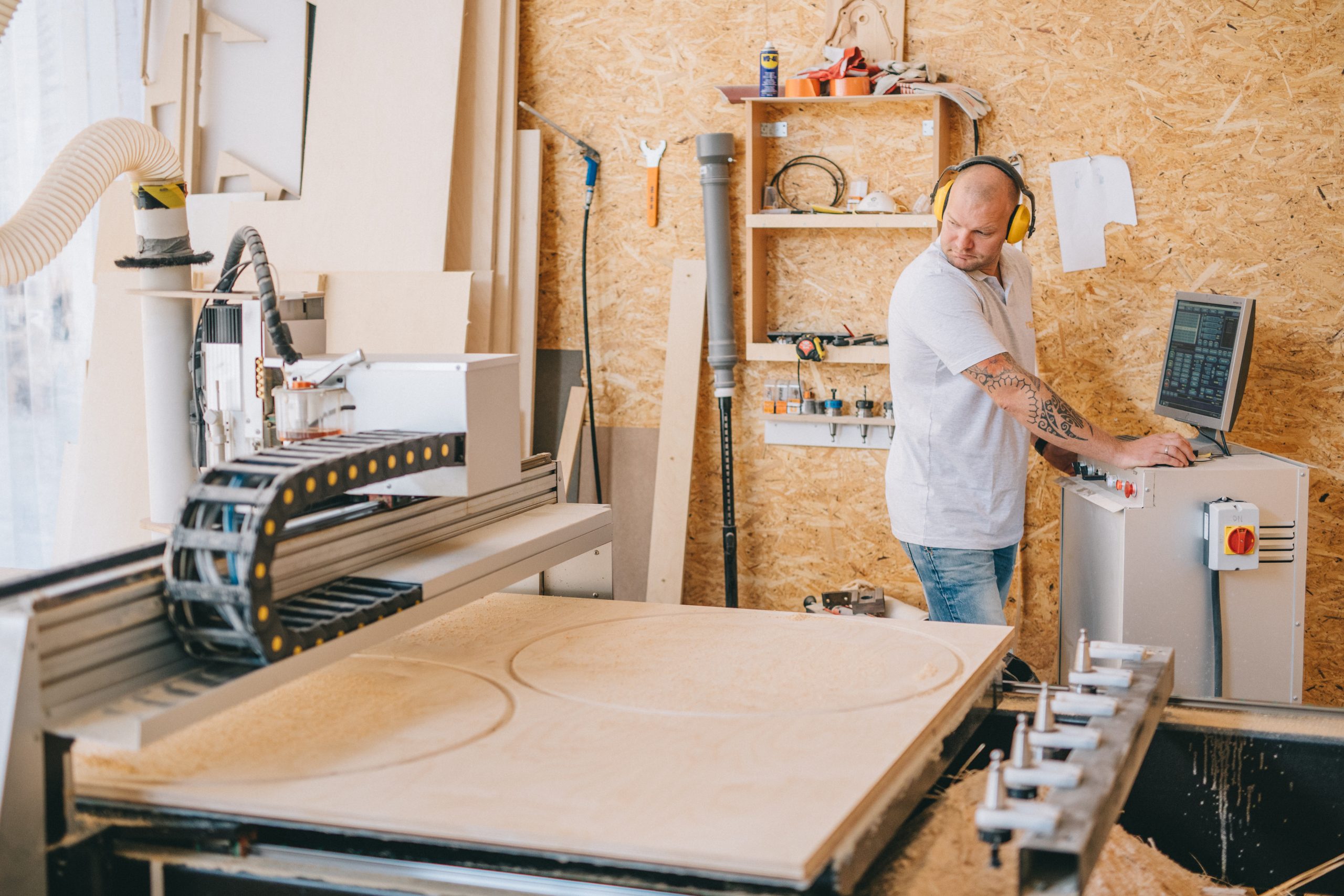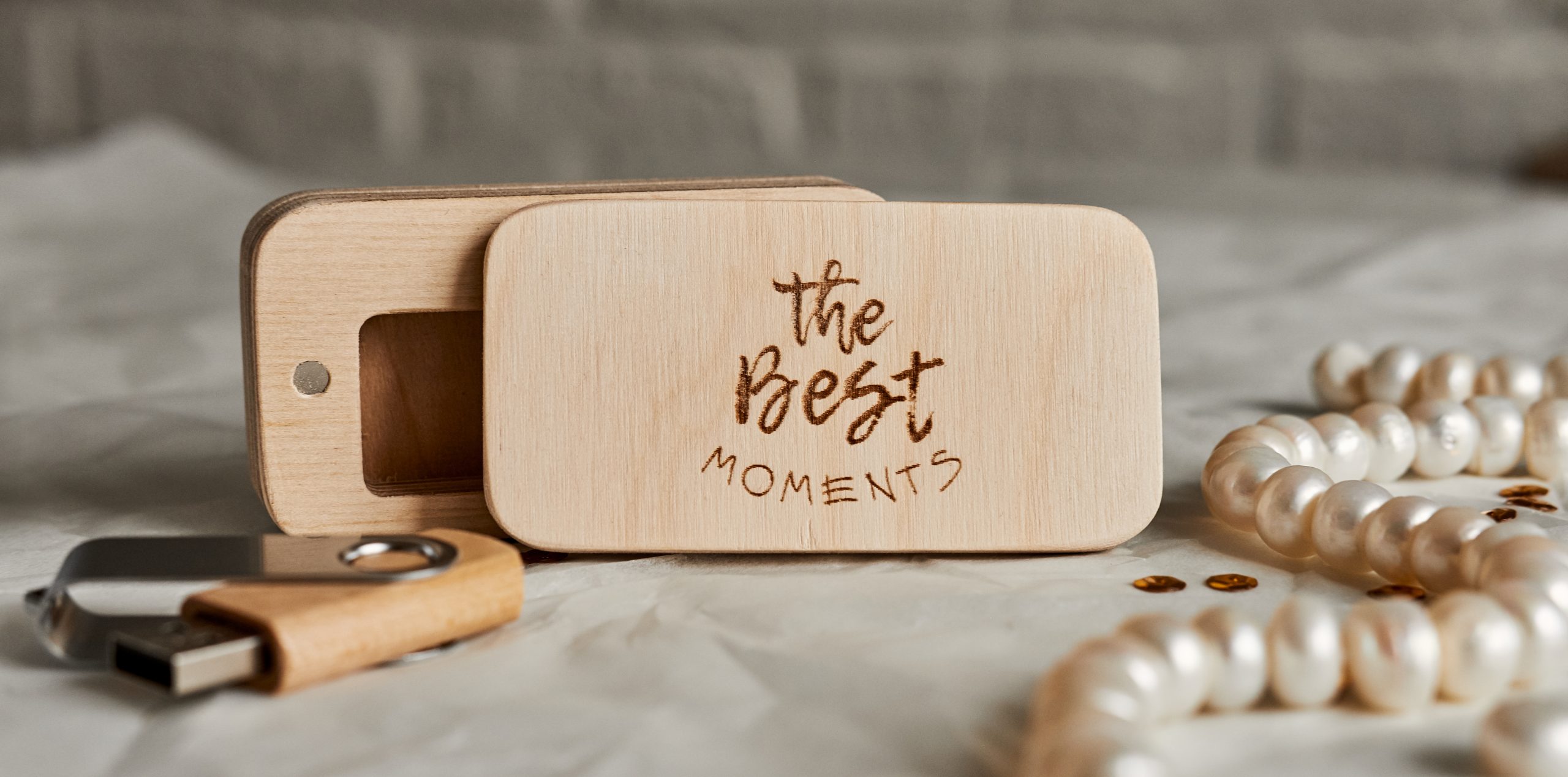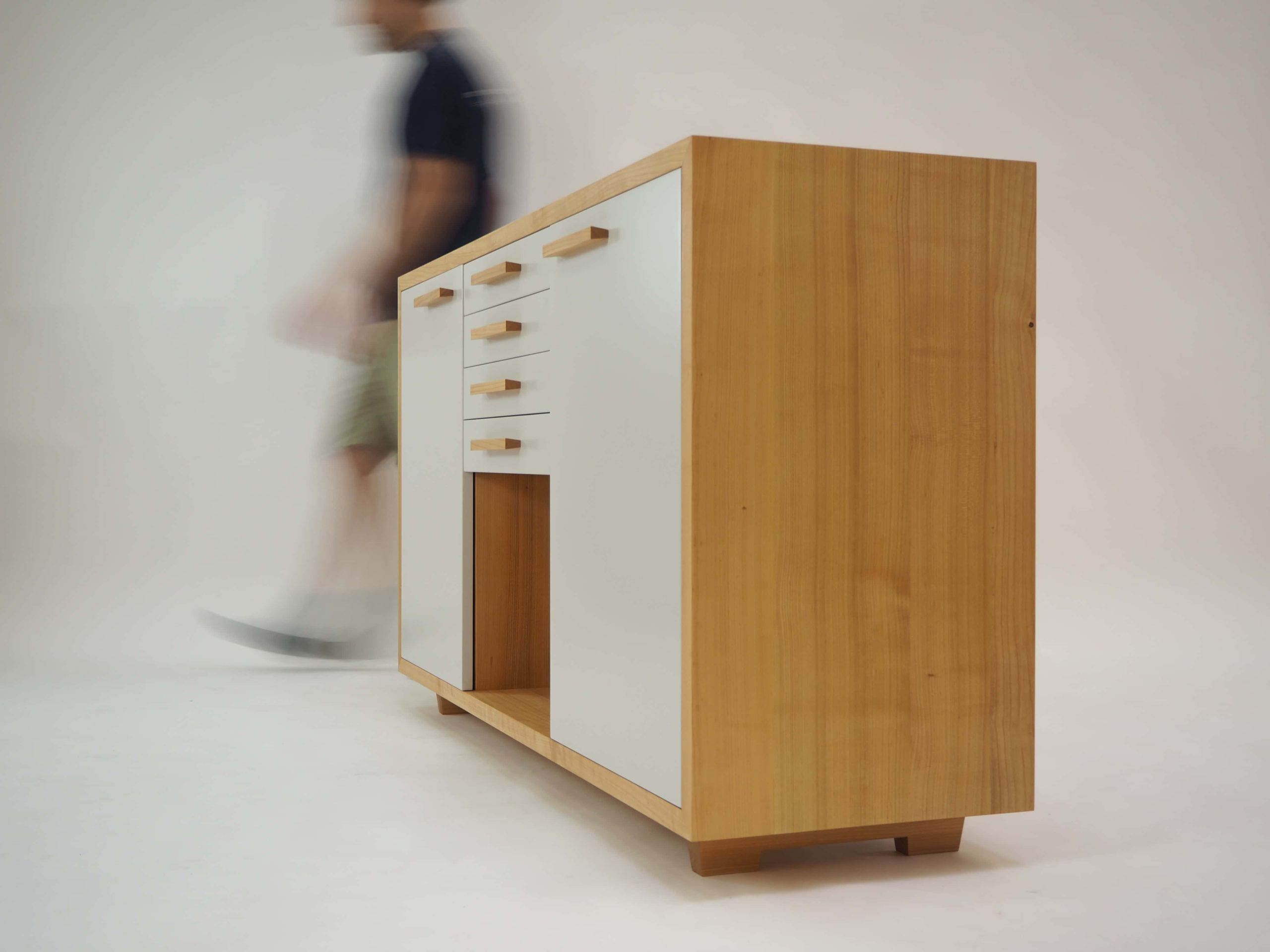Wood projects that sell: Boost your woodworking business
Are you looking to start your own woodworking business? Or are you an already active carpenter on the hunt for some good wood projects that sell? Look no further — we’ve gathered some tree-mendous product ideas for you to adopt.

Henry Kivimaa

Woodworking is a skill as old as time. Even cavemen knew the importance of woodworking by making a pointed stick pointier and hunting food — and they didn’t really know much. There is an undeniable charm to creating something out of presumably nothing. But as therapeutic as it is to carve away, it is a rather expensive hobby and can be a tricky business to manage.
So, to make sure that thinking of a product idea isn’t another nail in your coffin, we’ve come up with a few easy-to-sell wood projects for you to consider and possibly try out.
What is woodworking?
Woodworking is the craft of creating objects out of wood using a variety of tools and techniques. It is the process of building or remodeling various items by manipulating, shaping, and decorating wood.
Woodworking is mainly used to create furniture, decorative items, and other functional or artistic objects. It can range from simple DIY projects to complex custom designs that require advanced skills and specialized equipment.
Woodworkers use various hand and power tools to shape and manipulate wood, including saws, drills, chisels, planes, sanders, and routers. They may also use computer-aided design (CAD) software to create detailed plans for their projects before beginning construction.
Woodworking requires a combination of technical skill and creativity in order to produce high-quality finished products that are both functional and aesthetically pleasing. It is a skill that nearly anyone can acquire, making it a potential business opportunity for anyone interested.
What does a woodworking business do?

Woodworking typically falls into two categories:
- Crafting
- Restoring
What do these classifications mean?
Crafting
Crafting is the development and production of new objects made of timber materials. Wood artisans design the item, plan the manufacturing process and then put it into action. The result of their work is a new product.
Wood crafting can range from simple projects like wooden spoons or picture frames to more intricate pieces like carved sculptures or detailed furniture. It requires skill and creativity to transform a raw piece of wood into a beautiful finished product that can be enjoyed for many years to come.
Restoring
Wood restoration is the art of fixing, upgrading, and upcycling a wooden object. While most anything can be restored, it’s usually furniture that gets fixed up. The final result of restoring is an old item that looks like new.
Wood restoration often entails more than just woodwork. Depending on the furniture item, it can also include textile work like upholstering and sewing.
Mix and match
Most businesses tend to specialize in one category, but there are, of course, those who switch up occasionally and try out both. As a restorer, it is definitely more profitable to also produce new goods to sell to keep a steady cash flow at times when the restoration business is slower. Once you’ve mastered one area of woodworking, why not try something else? You know, ‘branch’ out?
Nailing all your woodworking business with Katana
Book a demo to get all your questions answered regarding Katana’s features, integrations, pricing, and more.
Woodworking ideas to sell: key elements to consider

As with any business, the main goal is to make sales. So if you want to nurture your profits from a seed to a money tree, here are some matters to keep in mind when choosing items to make and sell.
Achievability
Think about the resources you have and whether or not it is worth spending them on your products. While one-of-a-kind handcrafted items are definitely special and often pricier than generic and bulk-made products, they may ultimately not be worth the trouble.
Creating novelty items means you will only be focused on a single product, while you could be manufacturing a whole batch of products and selling them to several buyers for a much bigger profit. Also, being too ambitious in your final vision might mean higher manufacturing costs and occupying the tools and machines for a more extended period of time.
Seasonality
When thinking of wood projects that sell, try to consider goods that are always in demand. Wooden figurines of Santa Claus are cute, and everybody loves them, but they are in demand only once a year. If you have bills to pay in March, basing your whole stock on Christmas-themed items might not be the smartest business move.
Work smarter, not harder
One way to work in seasonality while not compromising on demand is to add a seasonal feature to your existing items. Imagine your business creates picture frames.
Before Valentine’s Day, it’s a nice twist to change the color palette to pink and red, adding an occasional heart somewhere. Same with Christmas — pop in a Santa, Christmas tree, or reindeer to accommodate your customers’ needs.
You won’t deviate from your usual manufacturing process too much, while still adding a fun quirk to your products and making them better fitting for seasonal events.
Practicality
While it’s not always necessary for a product to be practical, creating something that is useful can increase its value to potential customers. Practical items are more likely to be sought after and purchased because they serve a specific purpose and fix a problem in the user’s life. Haven’t we all heard the phrase “Do I really need it?” in our heads when shopping?
Impulse buys from shopaholics are great for business. But, a well-designed and practical product will make the difference between solving an issue for a customer or becoming another trinket cluttering their mantelpiece.
Aesthetics
Practicality and aesthetics may sometimes go hand in hand, but at other times people just want nice things. An excellent way to stick out from the competition is just to make a popular product look better than others.
Altering the appearance of your items doesn’t have to be a major change. Based on your target customers, it can be as simple as changing the finish and color of the product or just adding a tiny image or element.
Applying different wood manipulation techniques can also increase the visual appeal of your products and make them stand out amongst other manufacturers. Carving and scrollwork are some fun techniques that can significantly change the product design and give your goods a fancier, thus more expensive, look.
Think ahead
When making small boxes for storage, the appearance and finish of the product can determine how the client can use it. Adding a touch of color or painting some polka dots helps target parents trying to organize their nursery. Finishing with a waterproof varnish helps make them suitable for bathroom storage.
Woodworking ideas to sell: the best projects to start

When coming up with a business idea, try to put yourself in a customer’s position — what ‘wood’ you buy?
The online shopping boom and rise of ecommerce have made it easier than ever to start an online home decor business with minimal overhead costs. Online marketplaces like Etsy provide platforms for small businesses to sell their handmade and unique home decor items. Additionally, social media platforms like Instagram and Pinterest allow businesses to display their products and connect with potential customers on a global scale.
Here are some ideas to make your customers happy all year round.
Furniture
Wood furniture has been a popular choice for centuries and continues to sell well today.
One reason for its long-lasting popularity is its durability — wood is a sturdy material that, with the proper care and maintenance, can endure years of use without showing significant wear and tear. This makes it an ideal choice for furniture that will be used frequently, such as chairs, tables, and desks.
Another reason why wood furniture sells is its natural beauty. Each piece of wood has unique texture, patterns, and color that give it character and charm. Wood also has warm tones that add a cozy feel to any room. And to those who aren’t particularly fond of the stripey texture of wood, a few layers of color will do just the trick.
Additionally, wood can be crafted into a wide variety of styles and designs, from traditional to modern, making it suitable for every home.
With infinite options available in terms of style, design, and finish, customers are often drawn to wood furniture because they know they can find something that fits their individual tastes and needs.
Home decor
Home decor is a huge business, as a beautiful home never goes out of style. Items like picture frames, jewelry boxes, or napkin rings can really spruce up a room and add a touch of personality to an otherwise bland interior. Playing around with colors and finishes, you can add different moods to your products and create pieces for every home.
The home decor industry offers a wide range of products at varying price points, making it accessible to a broad customer base. Depending on the style and labor that each piece requires, you can sell your items at very diverse price ranges.
Some home decor items don’t require much effort on your part either. Take, for example, some basic candle holders, chopping boards, or a tray for the coffee table. These are products that everyone has at home and uses almost daily, making them smart and easy-to-sell wood projects.
People naturally desire to make their living spaces comfortable as well as stylish, which means there will always be a demand for home decor products. This demand is not limited by age or income level, as everyone wants to create a space that showcases their personal style and taste.
Home decor doesn’t have to be a permanent solution. The idea of replacing a piece once they get tired of it encourages buyers to commit more liberally to buying decorations into their homes.
Toys
Toys are a fantastic business idea for several reasons. First of all, they’re fun! As former kids, adults can appreciate a good toy just as much as children.
Kids never go out of season, and as long as babies are born, there will be parents buying toys for them. This means that there is a consistent market with the potential for repeat business as children outgrow or wear out their current toys and need new ones. Any parents out there know that this happens rather frequently, making toys and other kids’ products great woodworking ideas to sell.
Wood, however, is known for its durability, and kids tend to outgrow their toys rather than break them. This has led to wooden toys becoming somewhat of a nostalgic niche. Grandparents leave their blocks for grandkids to play with, making them a generational legacy.
The toy industry offers a wide range of products at varying price points, making it accessible to a broad customer base. From small dolls to larger playsets, there are products available for every age group and interest.
Seasonal spikes in demand are a huge factor to take into consideration during holidays such as Christmas and Hannukah or significant life events like graduations and the beginning of the school year. Luckily, birthdays are spread throughout the year, while Santa only comes once a year. This allows businesses to plan their marketing efforts and inventory management accordingly to take full advantage of these peak sales periods.
Another point to keep in mind is the strict standards for children’s products. Due to the third-party testing requirement, toys are definitely a more complex product to manufacture, as there will be many rules and guidelines to follow.
Personalized gifts
If a specific niche is too rigid for you or you feel like you already have a decent idea that could just need some jazzing up, there’s always one idea that rarely fails — personalizing your products.
Your items can range from piggy banks to model trains to rocking chairs, and they’ll still be identifiable as your brand. Customization can be small, as in using a color palette of the buyer’s choice, or more specific, like engraving or burning their names or chosen quotes somewhere onto the product.
People are vain, even if just a little bit, and like to feel special, so named products can be a great way to distinguish yourself from the competition. Also, these are unique gift ideas, and offering a variety of items with the option to customize each can be a clever way to guarantee repeat business.

Whatever product you choose, an idea is only the first step of a business. Next, you have to start your manufacturing. This means planning and managing, paperwork and spreadsheets, calculating and double-checking. Living in the day and age that we are in today, we’re fortunate enough to have technology do most of the calculating and paperwork for us.
How can Katana help your woodworking business?
Katana is a cloud-based all-in-one solution to fill your manufacturing needs. Here’s how Katana will benefit your business:
Live inventory management
Track your stock from raw materials to work-in-progress (WIP) to finished goods in real time. This means having a live overview of your whole inventory in all your locations. Stay ahead of any shortages while also making sure not to overstock.
Reorder points
Set automatic notifications for when stock levels are low. These will act as reminders for you to reorder supplies or manufacture more products to keep up with demand.
Reorder points can be accessed and edited in the Reorder point column on the Stock screen.
Production planning and scheduling
Create and assign tasks to your shop-level workers or, as they’re called in Katana — operators. Tasks can be prioritized based on demand, inventory levels, and business needs.
Production planning can be accessed in the Schedule tab on the Make screen.
Shop Floor App
Operators can access their assignments via a smart device, where they can view and change the status of tasks. Any changes in the Shop Floor App will automatically trigger updates in inventory and schedule, if applicable.
Accurate analytics
Sales and manufacturing are only one side of a business — the other one is data and insights. Katana offers information and statistics on your sales, production, orders, and customers.
Dig deeper into your business data on the Insights screen. For more detailed analytics, try out one of our integrations.
Integrations
If you’re missing a required feature or are already using a tool that you feel is necessary to your manufacturing, Katana has a range of integrations to choose from. The open API also offers the chance to hammer together a custom workflow explicitly designed for your business.
Don’t settle for oak-ay
Book a demo to get all your questions answered regarding Katana’s features, integrations, pricing, and more.

Henry Kivimaa
Table of contents
Get inventory trends, news, and tips every month
Get visibility over your sales and stock
Wave goodbye to uncertainty with Katana Cloud Inventory — AI-powered for total inventory control